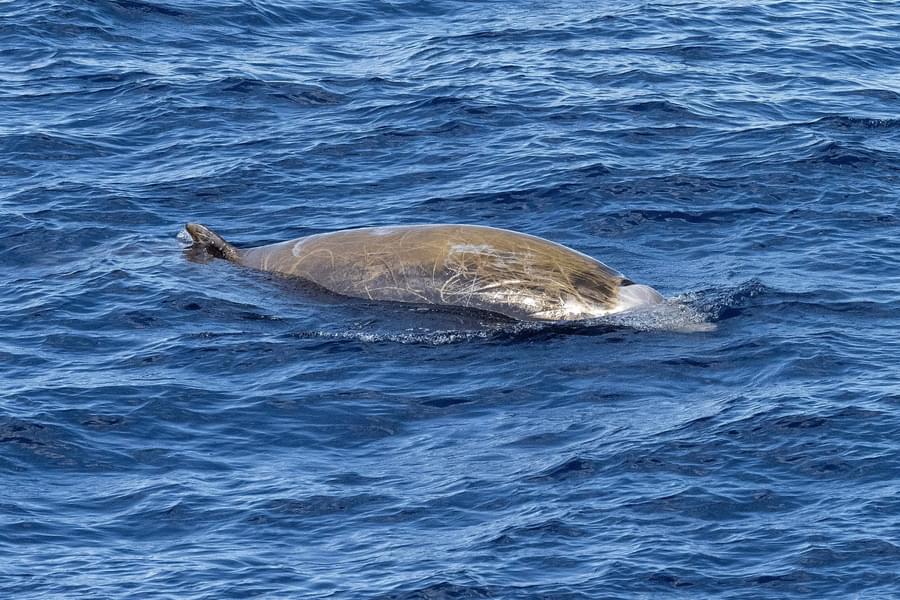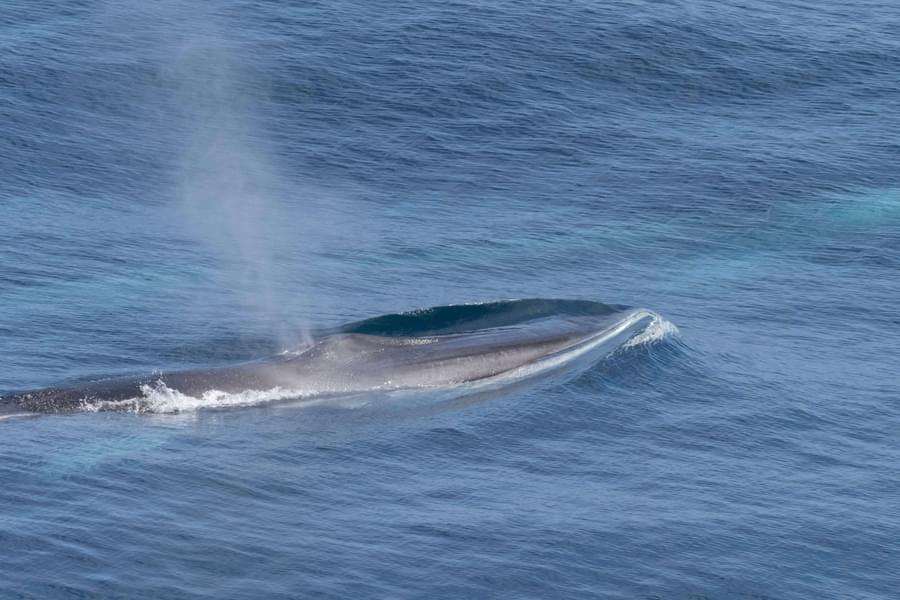Hello, I’m Emilie, one of ORCA’s Ocean Conservationists. I’ve been lucky enough to have spent two weeks P&O’s Britannia this summer, looking for whales and dolphins and engaging with cruise guests while sailing from the UK to the Mediterranean.
One of the most common questions from guests this summer was “how do you spot a whale or a dolphin?”. Here, I’m going to tell you about my top tips for spotting cetaceans!
Firstly, and I cannot stress this enough, you need to be looking at the sea. Whales and dolphins can be found in all the world’s ocean, but you won’t see them if you aren’t looking at the water. The deck watches that we Ocean Conservationists carry out involve scanning the sea for hours on end – it’s no wonder we often see hundreds of animals in a single day.
If you’re on a cruise ship then you don’t need to be on an outside deck doing a dedicated deck watch (although your Ocean Conservationist would certainly appreciate the company); just keep your eyes peeled when you’re eating dinner or having your morning coffee (and get a window seat!).
If you do plan to spend a long time looking out to sea from the open decks, then make sure you’re in a safe place to do so and that you’re wearing warm, waterproof, comfortable clothing. I’d highly recommend wearing polarising sunglasses (to protect your eyes, as much as anything), and find a spot where you aren’t looking at the glare from the sun.
It's tempting to look at the horizon when you’re scanning for whales and dolphins, but you’re unlikely to see anything that far away. You’re better to focus on the water within a few hundred metres of the ship. My top sighting of this cruise - three Cuvier’s beaked whales – were swimming less than 100m from the ship’s starboard side.

So, you’re in your chosen spot and looking out to sea. What are you actually looking for? Well, you’re trying to spot something that doesn’t fit with the scene in front of you. In very calm conditions, you may see something break the surface of the water, a splash or a dark shape. Or in choppier conditions you might see a “wave” that doesn’t seem to move like the other waves. It is certainly easier to survey in calmer conditions, so don’t be disheartened if your sightings all turn out to be white horses.
Binoculars are incredibly helpful for checking if you’re actually looking at an animal, and it helps to have an ID guide – like ORCA’s Oceanwatchers app - to hand for help with identification. I must confess that I spend most of my deck watches confirming that the waves are, in fact, waves.
Whales, dolphins and porpoises (known as 'cetaceans') are mammals, like us, and need to come up to the surface to breathe. This is when you’re going to spot them. With a whale, you may see a blow (imagine a big water spout) and/or a large, dark animal with a dorsal fin 2/3rds of the way along its back. A dolphin, on the other hand, has a dorsal fin in the centre of its back and is usually much smaller and more acrobatic than a whale. Dolphins are often seen breaching – jumping fully out of the water – and are hard to miss if you’re looking directly at them, especially if it's a large pod.
Also look for bird activity, which often suggests that there's food around, especially if birds like gannets are circling and diving into the water. Keep your eyes on this spot, as you never know what might also be feeding!

You can see cetaceans from any side of a ship and at any time of day. The wake of the ship is a particularly good place to spot dolphins; they love to play in the waves and are often seen jumping out of the water to the sides and aft of boats. Most of my sightings this year were of common and striped dolphins playing in Britannia’s wake. It’s always worth checking if anything is swimming in the bow wave of passing boats, too.
You can also spot whales and dolphins if you’re not on a ship. Many species can be found in shallower, coastal waters so it’s always worth keeping an eye out from the land. Again, find somewhere where you can comfortably look out to sea and remember that a wave is, often, just a wave.
If you want to learn more about surveying for whales, dolphins and porpoises and want to join ORCA as a volunteer citizen scientist, why not book onto one of our upcoming Marine Mammal Surveyor courses?
Happy spotting!

